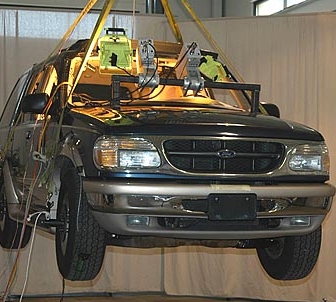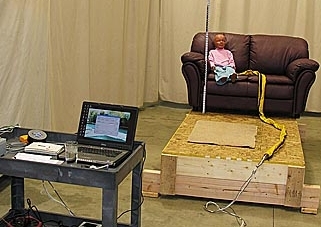DRE’s custom designed field and in-house testing provide technically accurate demonstrative verification to supplement analyses and research. Our test resources evaluate existing or alternative component and system designs using data acquisition/signal conditioning equipment capable of on-board (impact and non-impact), off-board, and telemetry acquisition. Testing can be thoroughly documented by high speed, real time and miniature video cameras. Our custom six-degrees-of-freedom watercraft and road vehicle handling instrumentation has GPS positioning and operator control inputs designed to assess handling and maneuverability in response to driver inputs.


We perform quasi-static, dynamic and impact tests to measure forces, motion, accelerations, strain, pressure and temperature. Specialized shock table and impulse response testing measure and perform vibration modal analysis, as well as transmissibility and impedance transfer function modeling. Acoustic monitoring is also performed for noise assessment applications.
Instrumented anthropomorphic test devices (ATDs) assess injury potential and/or injury mitigating device effectiveness. Commonly injured body regions investigated include lumbar spine injuries, cervical spine injuries, and head injuries for adults and children.
Marine applications:
- watercraft handling and maneuverability
- staged watercraft crash testing
- pressure testing in vessels
- pipes and free jet flow testing
- propulsion system torque and thrust testing
- wave profile and period monitoring.
- lower explosive limit (LeL) level monitoring
- slip and fall coefficient of friction testing
- vibration testing and
- carbon monoxide (CO) monitoring.
Full-scale vehicle applications:
- dynamic vehicle testing
- impact drop testing
- water submersions and
- component level shock table testing.

Inflatable restraint deployments:
- out-of-position occupant injury potential evaluations
- seat belt pretensioner deployments
- seat belt retractor evaluations (linear and angular acceleration)
- quasi-static component ultimate strength testing and
- force versus deflection characterization.
